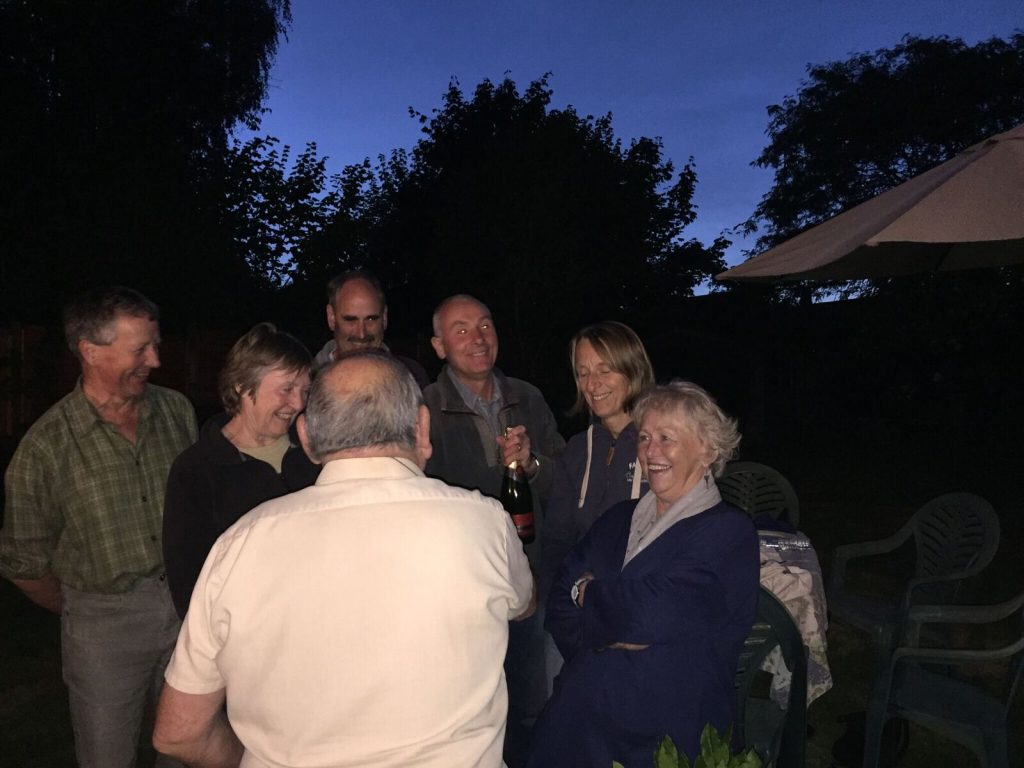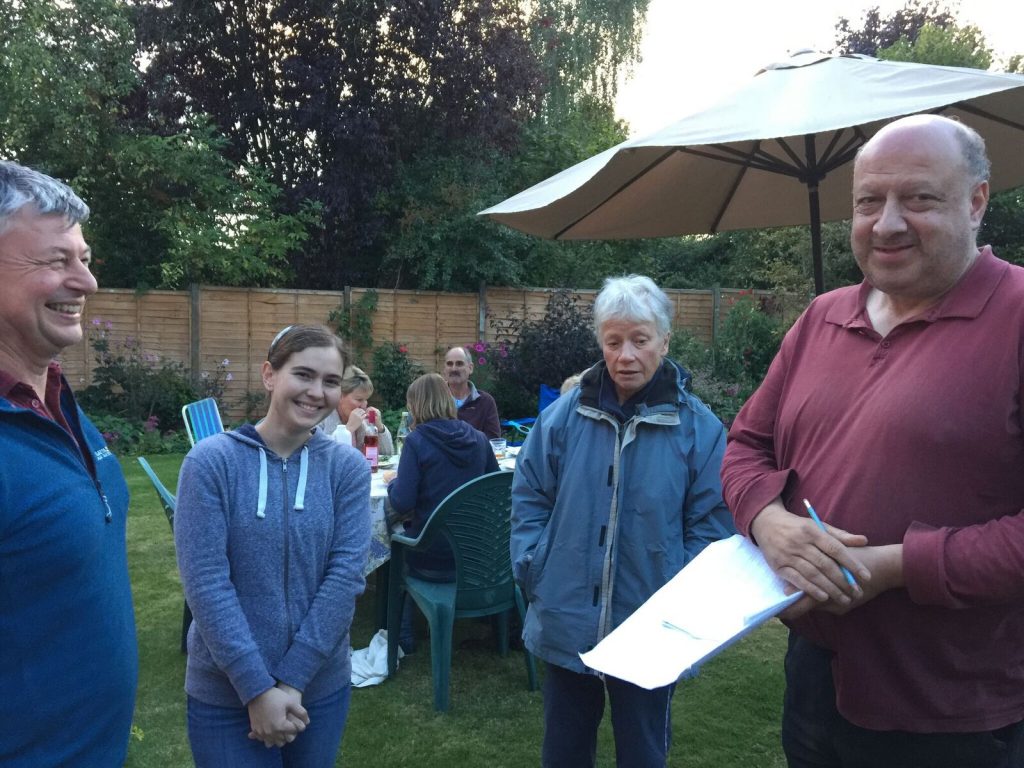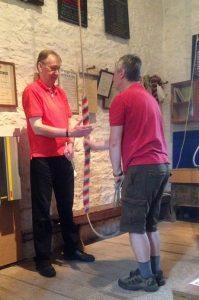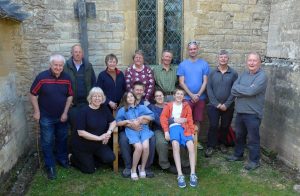Having left ex-hurricane Ophelia behind in the Lake District Tuesday morning, I headed over to Tuesday evening’s special practice at Islip. Not having rung for almost a week, I needed my fix of tower bells.
Our branch president, Willie Haynes and I were initially the only non-Islip ringers to join Teresa, Kathryn, Sally and Sue. The practice had Reverse Canterbury doubles and Plain Bob Minor on the agenda, but for Sue we kicked off with Plain hunt on 5, Sue on 3, which was getting pretty steady after a couple of courses. We later did some more Plain Hunt on 5, Sue ringing 2.
By this time we had been joined by Richard and Jan Haseldine, who formally received the branch striking competition shield from Willie, complete with engraved inscription. We then rang a couple of plain courses of Reverse Canterbury, followed by a touch.
As we were strong enough to provide a stander for Sally, we rang a touch of Plain Bob Doubles, Sally ringing 3 affected, called by RIchard, which went pretty well.
Following the agenda, we duly rang Plain Bob Minor, starting with a plain course, followed by a 120 change touch involving 2 singles at 5th and 10th lead ends, called by myself. However, two calling blemishes to report, the first being ‘bob’ corrected to single – thanks to Richard for putting right a couple confused ringers in the band- the second that I forgot to say “that’s all” immediately after the second single, so we had an extra 60 before coming round again.
Finally, we very nearly completed a 120- change touch of Grandsire doubles, Sally ringing 3 observation, supported by Jan, before we rang down in Peal. All in all a good practice.
Hope to see you at the next branch practice at Bletchingdon on 2nd November.




